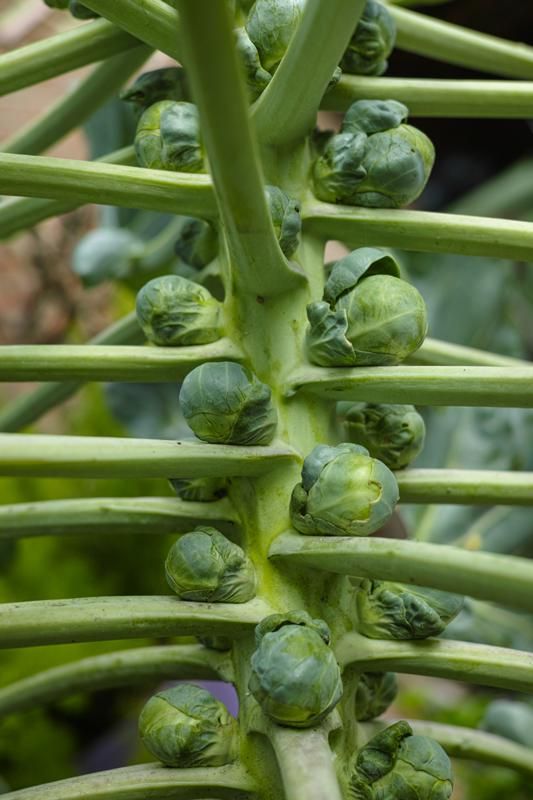Grow yourself a merry little Christmas
)
We take a closer look at the most popular veg to transform your festive dinner plate – all from your own garden
There are a few vegetable crops that are particularly iconic on the festive table – from the much maligned Brussels sprout to the ever-popular roast potato. Here, we take a look at the five crops growers are most likely to contribute to the festive feast – and some top growing tips.

- Potatoes
With their crisp and crunchy exterior giving way to a beautiful, fluffy and flavoursome centre, the roast potato is often one of the most popular components of this seasonal meal. With the final spud in the bowl a real prize to the diner who gets it, there is no such thing as too many potatoes! The good news is, they couldn't be simpler to grow, whether you have a small balcony garden filled with pots, or a full-sized allotment. Spuds can be grown quite easily in bags, and although you may not get the vast stores of crops allotment growers can yield, you will still be able to make a brilliant contribution to the festive table. To grow like this, simply fill your pot or growing bag 1/4 full with good-quality compost. Place the seed potatoes on top, and cover with more growing medium. As the leaves grow, keep covering them with more compost, until the container is full. Keep well watered. Once the plants have flowered, ease off on your watering routine, and the plants will die back. At this point, have a feel under the surface to see how your potatoes are getting on. When you are ready to harvest them, simply tip the container upside down and see what you've got!
- Parsnips
When glazed with honey and sprinkled with sesame seeds, this common garden root is transformed into one of the stars of the Christmas table. They taste better after a frost, so avoid lifting your parsnips until as close to the big day as possible. If the ground is rock hard, however, and you don't think you will be able to lever them out, they can be stored in a box filled with damp sand prior to use. Remember to check your stores regularly, as any deteriorating veg will quickly turn others. Make sure you use any damaged crops first, as these will not store well. Parsnip seed deteriorates faster than lots of other types, so if you want to give them a try next year, it is advisable to start with new, fresh seed.
- Carrots
A true plot staple, these humble roots come in many shapes, sizes and colours, so there is something for every garden – and every dinner plate! What's more, they aren't very demanding crops at all – simply requiring occasional weeding, and watering during dry spells. The main threat to these roots is carrot fly, so ensure you don't crush the foliage while you work your carrot patch, as this releases a smell that attracts the pests. Covering your carrot bed with horticultural fleece helps ward off any attacks, and you will be rewarded with sweet, crunchy roots. They will taste better if you pick them as soon as they reach the desired size – those left to grow very large can have a compromised flavour.
- Cranberries
It isn't just vegetable sides gardeners can cultivate themselves. A home-made cranberry sauce may be impressive, but home-made and home-grown? That earns you some real Christmas brownie points! As luck would have it, cranberries are not difficult to grow, and look great in the garden, too, offering a year-round display as well as the end of season bounty. Provide an acidic growing medium the same as you would for blueberries, and make sure it is water-retentive (but not waterlogged!). Keep the ground weed-free to reduce competition for resources. Cranberries will be ready to harvest in September, but can be turned into a delicious sauce which can be stored and used throughout the winter months.
- Brussels sprouts
You can't mention Christmas vegetables without bringing up the Brussels sprout. Dividing festive diners year after year, these little green buttons are either loved of hated with very little in between! However, they are a great source of pride to growers, who will have nutrured the architectural stalks through winter to get them this far. Wind rock can be a problem for these plants, so ensure they are earthed up well and staked once they grow to their full height, and consider this when you are choosing a site for your sprout bed at the start of the season – anywhere protected from the wind will be best. Come harvest time, pick from the lowest sprout on the plant and work up.


